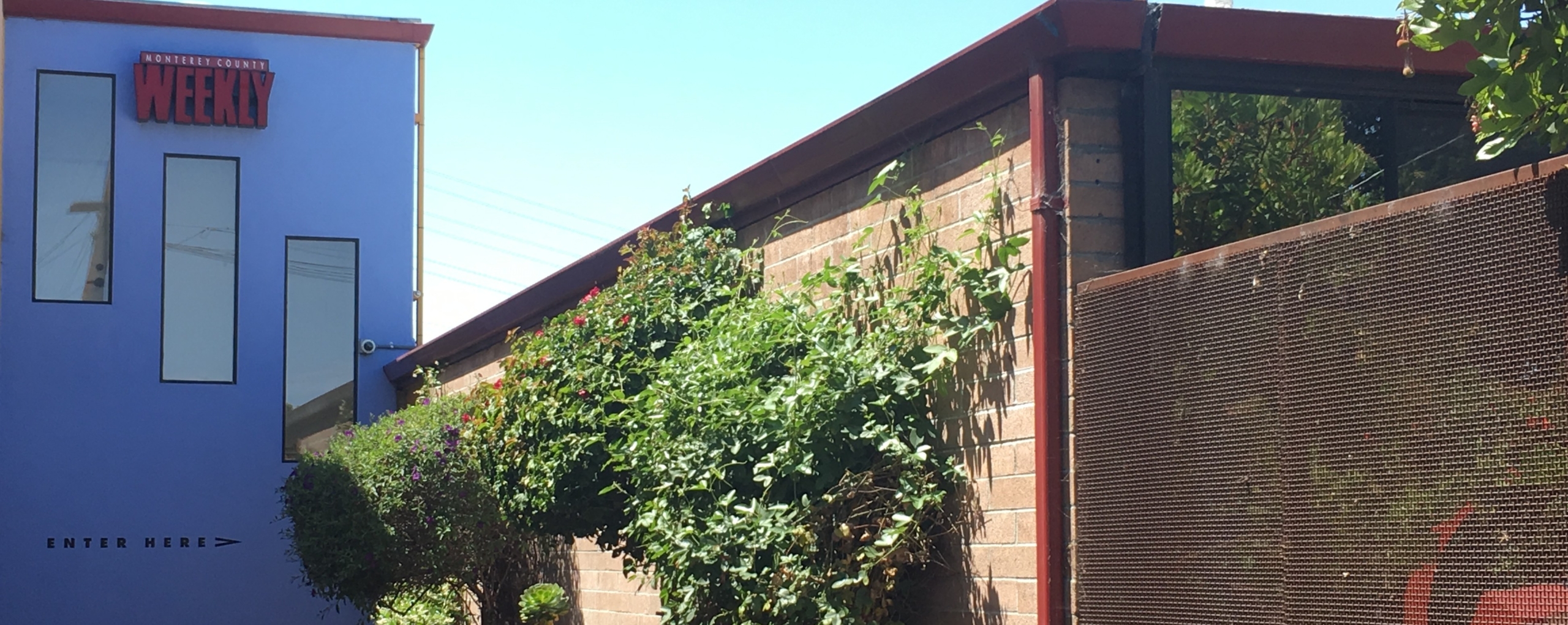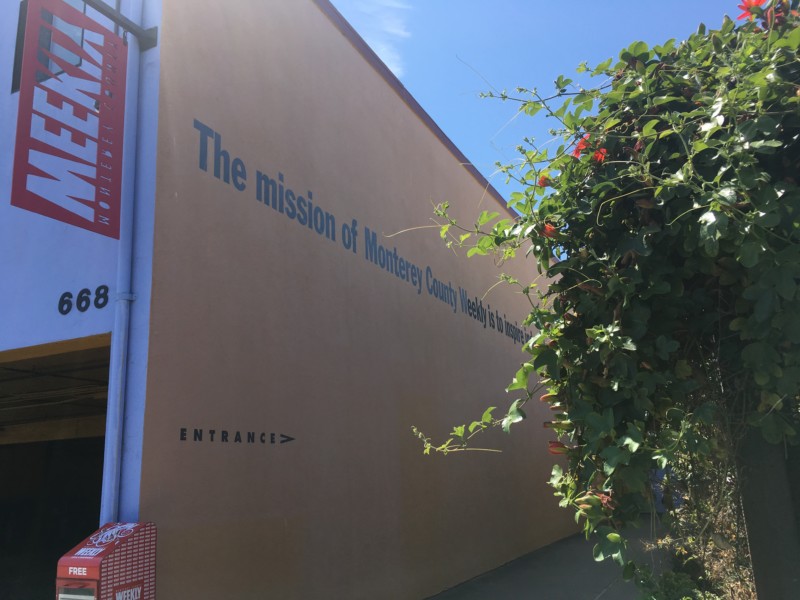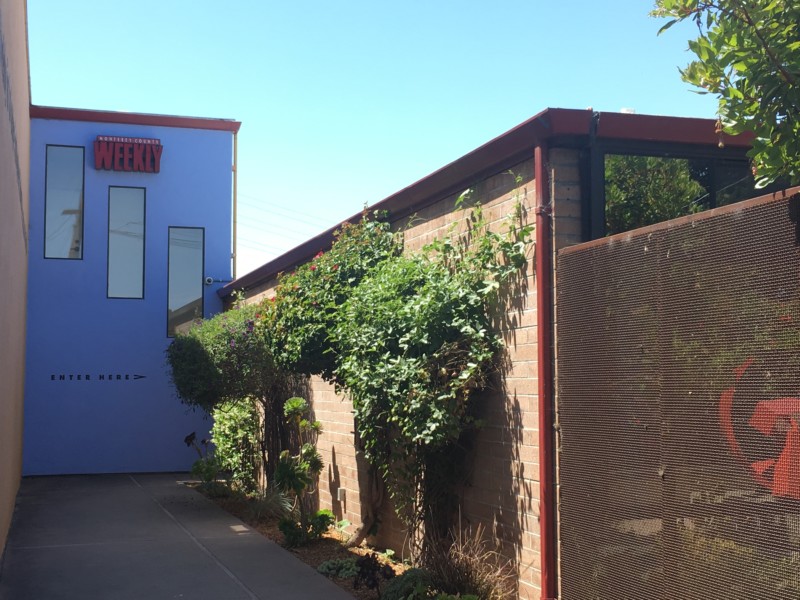Sign up for the daily CJR newsletter.
At the Monterey County Weekly, the alt-weekly I edited for about six years and where I still write a column, there’s been a protocol in place since the early ’90s to deal with people who come to the office looking to cause trouble, wreak havoc, or worse. Whoever’s manning the front desk at the time is supposed to pick up the phone and page a non-existent employee to the lobby. If that particular name goes out, it’s a signal for someone in the office to call 9-1-1, and for everyone to leave the building as quickly and quietly as possible.
So it went on a particular day in 2014. I was in my office, probably staring out the window at the parking lot of the taqueria next door and trying to decide which reporters needed soothing and which needed motivating on that particular day, when one of the paper’s designers paged the name.
My heart dropped into my stomach. I went out into the newsroom, told a newish intern sitting outside my office to stop what she was doing, leave her things, and walk out the back door, down the steps and away from the building as fast as she could. As the managing editor grabbed a baseball bat and headed down the stairs to back up the designer (“Is this really happening?” he asked rhetorically as he walked by), I called 9-1-1, then went from desk to desk and told reporters and interns to drop what they were doing and get out.
The guy in the lobby was one of our regulars, a schizophrenic man who relied on our office administrator for some gentle conversation, back issues of the paper, and the occasional photocopy. When he found out she was off that day, he became agitated. The designer called the code and summoned the police, who showed up en masse in tactical gear with rifles in hand. A scary shot of adrenaline, to be sure—but, ultimately, no harm, no foul.
Now, easy access to the Monterey County Weekly lobby—via an open front door, a laissez-faire approach to security that allowed anyone, appointment or no, to walk directly into the newsroom via a frequently unlocked side gate—is all in the past. I imagine the same is true for most every newspaper in the nation, following the June 28 murders of four writers and an advertising assistant at the Capital Gazette, the Baltimore Sun-owned paper in Annapolis, Maryland.
In a profession that requires us to be open for sources, for tips, for community access, we’ve all had to become less accessible.
The Weekly began locking down its building in 2016, prompted by a few incidents in the preceding years. An intern who had been let go not long after she was hired began showing up at the office, blowing past the front desk and up to the newsroom, and engaging the managing editor in lengthy diatribes about how she had been treated. A subject we’d covered for years, through his involvement in local business and politics (as well as his criminal trials and civil restraining order hearings), also began showing up at the office, to take the publisher, a few reporters (one of whom is now the editor) and me to task, with a new, anti-Semitic bent to his rants. I became more security conscious when a reader who objected to the paper’s politics in general, and to my coverage of a sheriff’s candidate he supported in particular, followed my then-teenaged son around a local community college campus and filmed him, then posted the video to YouTube. The subtle message of that act—I can get to what you love if I want to—had me considering a restraining order as well as a concealed-weapons permit.
Will there be other aggressions, like the threat made by a Western Massachusetts woman to shoot a reporter? Or threatening letters, like those mailed to two Ohio newspapers, whose anonymous sender(s) claimed were laced with fentanyl? Or trespassers, like the one who made it into the New Mexico television station KRQE and onto the set twice?
I didn’t pursue either. But each individual’s name went on our informal list of people who might show up at the office and try to cause harm. The paper has a keep-away order on the anti-Semitic ranter. And any time I’m working on a piece that might raise someone’s ire, I mention to a few police acquaintances: “If I end up missing or dead, it’s likely [insert name here] who did it. Avenge me.”
In terms of the easy-access building, Weekly founder and CEO Bradley Zeve tells me he’s amazed we held out as long as we did. We held out past a ’90’s-era crack addict who went through a plate glass window in the drug house across the street, severed an artery, and then stumbled in our front door, where he ripped cords out of a stereo system to use for a tourniquet. We held out past covering a rape case involving local community college football players, whose friends then threatened to come to the office and kill the reporter who wrote the stories. We held out past all manner of threats when covering stories people don’t want to see the light of day.
“We want to welcome people because they come through the door with their stories and one out of 100, they are very good stories. The idea that we have to lock our doors goes against our true nature. But we started getting crazy threats and we realized we needed to have a locked door,” Zeve says. “How many people have we interacted with in 30 years and we’re trying to prevent one possible incident from occurring? How many times over the years have we completely pissed people off? It’s gotten to the point of, ‘Are we safe? Are they going to contain their anger?’”
Or will they go off, like the Annapolis shooter? Will there be other aggressions, like the threat made by a Western Massachusetts woman to shoot a reporter who had requested she remove him from a mailing list because it dealt with issues outside his area of coverage? Or threatening letters like those mailed to the Circleville (Ohio) Herald and the Columbus Dispatch, whose anonymous sender(s) claimed were laced with fentanyl? Or trespassers, like the one who made it into the New Mexico television station KRQE and onto the set—twice—forcing the cancellation of the 9pm and 10pm broadcasts?
All three of those incidents took place within days of the Annapolis killings. With a president in the White House who openly bashes the media and makes clear his disdain for press freedom, we’ve entered into a bizarro, anything-can-happen era.
At the Weekly, in the summer of 2016, cameras monitoring the entrance went up and a new door went in that stays locked, even during daytime. The door requires visitors to be buzzed in (by the person at the front desk) and employees to punch in a unique code to unlock the door. The Weekly also installed a panic button that, if pressed, summons local police from a headquarters just blocks from the office. So far, the panic button has only been used once: by accident, when an ad rep thought she was hitting the button to open the front door.
But that front door remained a worry. Like the door to the Capital Gazette, it’s made of glass.
So it is that the Weekly will once again add security to our funky, mid-century modern building. Instead of being able to walk straight up to the glass door, visitors will first stop at a high steel gate that will go up across the approach to the building. There will be a camera, an intercom, and a keypad for employees to code in. Visitors will be identified and announced. When they finally come through our door, we hope they’ll still bring their story ideas along.
ICYMI: The looming threat of newsroom cyber attacks
Has America ever needed a media defender more than now? Help us by joining CJR today.









